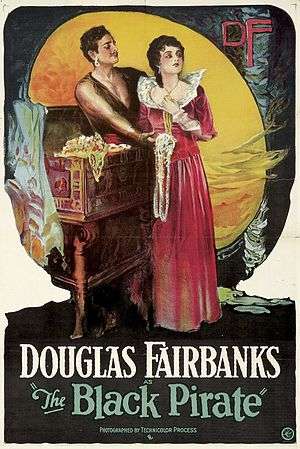The Black Pirate

In The Black Pirate, Douglas Fairbanks, king of silent action adventure pictures, plays a nobleman who has vowed to avenge the death of his father at the hands of pirates, and once upon the pirates' vessel, protects a damsel in distress (Bessie Love) taken hostage by the band of thieves.
This swashbuckling tour-de-force by Fairbanks is most significant for having been filmed entirely in two-strip Technicolor, a process still being perfected at the time, and the precursor to Technicolor processes that would become commonplace by the 1950s. Fairbanks wrote the original story under a pseudonym, and Albert Parker directed.
The Black Pirate was added to the National Film Registry in 1993.
Watch it here, on this very wiki, or download it from the Internet Archive.
- Hollywood Costuming: An Enforced Trope due to the technology available. Two-strip Technicolor could only handle reds and greens, so the props and costumes were designed to invoke the Old Masters, especially Rembrandt.
- The Other Darrin: Yes, in a movie. Mary Pickford replaced Billie Dove in one of the final shots of the film, when the hero kisses the heroine. Pickford and Fairbanks were married at the time, which lead to a very enthusiastic kiss.
This page needs more trope entries. You can help this wiki by adding more entries or expanding current ones.